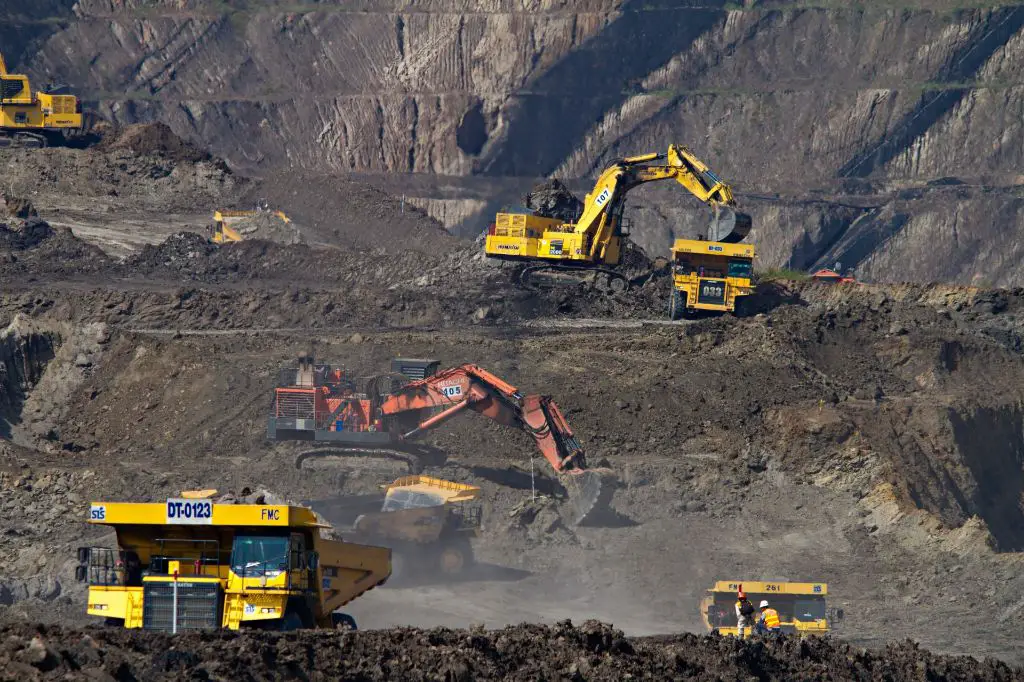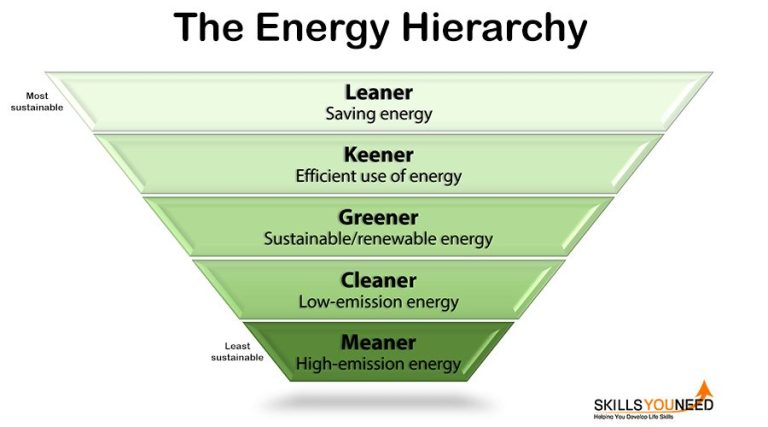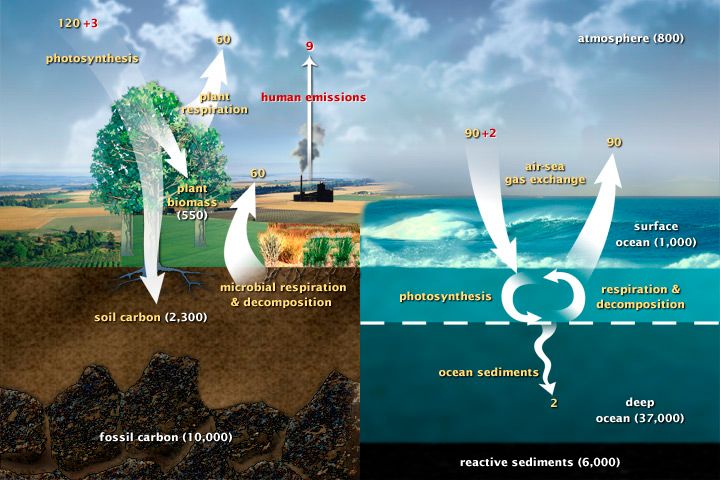Is Coal An Example Of Non-Renewable Energy?
What is Coal?
Coal is a combustible black or dark brown rock consisting of carbon, hydrogen, oxygen, sulfur, and nitrogen. It is formed over millions of years from compressed plant matter that gets buried under sediment and experiences high heat and pressure. There are four main types of coal:
- Peat – Partly decayed plant matter with high moisture content.
- Lignite – Low grade coal with high moisture levels formed under low heat and pressure.
- Bituminous Coal – Most common type of coal used to generate electricity, formed under higher heat and pressure.
- Anthracite – Highest rank coal with high carbon content and low moisture levels, formed under extreme heat and pressure.
Coal forms from ancient plants that decayed in swamp environments millions of years ago. As the plants died and sank under water, they formed a spongy material called peat. Over long periods of time, the peat was buried by sediments and other organic matter. The increase in heat and pressure from the added layers turned the peat into coal through a process called coalification.
How Coal is Used
Coal is a significant source of energy, generating roughly 40% of the world’s electricity. The main uses of coal are:
- Electricity production – Coal is burned in power stations to generate electricity, providing around 30% of the world’s electrical power.
- Steel production – Metallurgical coal is an essential ingredient in steel manufacturing.
- Cement manufacturing – Coal is used to heat cement kilns.
- Industrial and residential heating – Coal provides energy for factories, businesses, and homes.
The top coal consuming countries are China, India, the United States, Japan and Russia. China uses over half of the world’s coal, consuming around 4 billion tons per year, mostly for electricity production. Coal accounts for approximately 72% of China’s electricity generation. India is second, consuming around 1 billion tons of coal annually, followed by the United States at over 500 million tons. However, the U.S. has been steadily reducing its reliance on coal over the past decade.
Why Coal is Non-Renewable
Coal is considered a non-renewable energy source because it takes millions of years to form naturally and the world’s supply of coal is finite. Coal is formed from ancient organic material that decays and experiences high pressure and temperature over millions of years. This means coal cannot be replenished in a timescale meaningful to human civilization.

The coal that is used today started forming over 300 million years ago during the Carboniferous Period. At the rate coal formed historically, it is estimated that it takes anywhere from 10 million to 300 million years for coal to form from organic matter. Therefore, in human terms, the supply of naturally occurring coal is fixed and cannot be replaced once depleted.
Coal reserves are estimated at around 1 trillion tons worldwide. At current rates of production, these reserves are expected to last another 150-200 years. However, coal cannot realistically be replenished at a pace that matches its extraction and consumption by human activities. The finite coal reserves accumulated slowly over hundreds of millions of years far exceed the timescale of human civilization. Once extracted and burned, coal is gone for all practical purposes.
In summary, coal is non-renewable because it cannot be regenerated within a reasonable time period compared to its rate of consumption. The coal used today will not be replaced in our lifetime, leading to the depletion of global coal reserves over the coming centuries.
Environmental Impacts of Coal
The environmental impacts of coal occur during both the mining and burning processes.
Coal mining can have severe environmental impacts, especially strip mining which removes mountain tops to access coal seams below. This practice destroys landscapes, forests and wildlife habitats. It also requires the removal of billions of tons of dirt and rock which is dumped into valleys, burying streams and contaminating water sources.
Underground coal mining is hazardous for coal miners who can be injured from collapsing rock or explosions. Subsidence from coal mines can also damage landscapes and structures.
Burning coal emits significant amounts of carbon dioxide, nitrogen oxides, sulfur dioxide, particulates, mercury and other pollutants. These emissions contribute to acid rain, smog, respiratory illnesses, climate change and other environmental problems. Coal power plants are the largest contributors to US sulfur dioxide and nitrogen oxide emissions, major components of acid rain and smog.
Coal ash from burning coal is a toxic heavy metal that contaminates groundwater supplies if not properly disposed. Coal plants also use vast amounts of water for cooling.
Overall, coal is one of the dirtiest forms of energy in terms of emissions and environmental damage from mining and power generation.
Renewable Energy Alternatives
As concerns grow over the environmental impacts of burning fossil fuels like coal, many countries are transitioning to renewable energy sources like solar, wind, and geothermal.
Solar power harnesses energy from the sun using photovoltaic panels. It’s clean, unlimited, and prices are falling rapidly as the technology improves. Solar arrays can be installed on rooftops or at utility-scale solar farms to provide greener electricity.
Wind power utilizes large turbines to capture kinetic energy from wind currents. Wind farms continue to expand around the world, providing cheap, emissions-free electricity. Advancements in turbine technology allow wind power to compete economically with fossil fuels.
Geothermal energy taps into underground reservoirs of steam or hot water, which can spin turbines to generate power. While geographically limited, geothermal provides consistent baseload power without any fuel consumption or emissions in suitable regions.
Switching to renewables provides many benefits over burning coal and other fossil fuels. Renewable energy produces no air pollution or carbon emissions while generating electricity. The fuels are free and unlimited. Investing more in solar, wind and other renewables will reduce our dependence on coal and create a cleaner energy system.
Coal Reserves Around the World
The countries with the largest coal reserves are the United States, Russia, China, India and Australia. Together they account for over 75% of proven coal reserves globally.
The United States has the largest coal reserves, with over 254 billion short tons, according to 2020 estimates from the Energy Information Administration (EIA). This is enough to last about 300 years at current rates of extraction.
Russia comes in second with around 160 billion short tons of coal reserves, followed by China with 142 billion short tons. India and Australia have around 125 billion and 78 billion short tons, respectively.
Other major coal reserve holders include Germany, Ukraine, Kazakhstan, Poland, Mexico, South Africa, Brazil, Serbia, Colombia, Canada and Indonesia.
According to one estimate, at current production levels, global coal reserves could last around 150 years. However, reserves may last longer as extraction rates decline in the future with efforts to curb carbon emissions. Remaining reserves could be stretched out for over 200 years.
The Coal Industry
The coal industry consists of major companies involved in coal mining, processing, and transportation. Some of the largest coal companies in the world include Coal India, China Shenhua Energy, Glencore, and Peabody Energy. In the United States, the top producers are Peabody Energy, Arch Coal, and Cloud Peak Energy.
The coal industry employs millions of people worldwide and generates billions in economic activity. In the United States alone, coal mining provides over 70,000 direct jobs and supports an estimated 800,000 indirect jobs. The industry contributes billions in tax revenue to local and federal governments. Major coal-producing states in the US include Wyoming, West Virginia, Kentucky, and Pennsylvania where the industry represents an important source of jobs and economic impact.
Decline of Coal
In recent years, many countries have been moving away from coal power and transitioning to renewable energy sources like solar and wind. This shift has been driven by concerns about climate change and air pollution from coal plants. Burning coal releases greenhouse gases like carbon dioxide that contribute to global warming. Coal power is also a major source of smog and toxic emissions like sulfur dioxide, nitrogen oxides, and mercury.
As more countries commit to reducing emissions under international accords like the Paris Agreement, coal is being phased out. Major economies like China, the European Union, and the United States have all announced plans and policies to curb coal use and ramp up renewables. China, which burns over half of the world’s coal, aims to reach peak coal consumption by 2025. The EU plans to phase out unabated coal by 2030. Even India, whose electricity grid is highly reliant on coal, has set ambitious renewable energy goals.
The growth of affordable clean energy sources like solar, wind, and batteries is enabling this global energy transition. In many parts of the world, building new renewable power is now cheaper than building new coal plants. Renewables are being rapidly deployed and integrated into electricity grids. The coal industry is facing structural decline as a result of market forces driving countries away from polluting fossil fuels.
Coal Consumption Projections
The future outlook for coal demand is uncertain. On one hand, global coal consumption has risen sharply over the past two decades, driven by industrialization in developing countries like China and India. In 2000, coal accounted for just over 25% of global primary energy consumption. By 2018, that share had climbed to 27%.
However, growth in coal demand is expected to slow down going forward. The International Energy Agency (IEA) projects global coal demand will remain stable through 2024. After that, demand is expected to gradually decline due to several key factors:
- Climate change policies and carbon pricing mechanisms that discourage coal use
- Competition from cheaper natural gas and renewables
- Slowing electricity demand growth
- Air pollution regulations in major coal consumers like China and India
The phase out of coal power in many developed countries will also dampen growth in global coal demand. For example, coal use in the United States and Europe has fallen by around 40% since 2000. However, developing Asian economies are still expected to drive coal demand over the next two decades. Coal could maintain a 25% share of global energy through 2040, even as renewables gain ground.
Summary
In summary, coal is considered a non-renewable source of energy because it takes millions of years to form from organic material through intense heat and pressure. Unlike renewable resources like solar, wind, and hydropower that replenish naturally, coal cannot be regenerated in a short period of time. Once coal reserves are extracted and burned for fuel, they cannot be replaced.
With global coal supplies finite and climate change threatening ecosystems worldwide, many experts argue that a transition from fossil fuels like coal to renewable energy is urgently needed. As coal-fired power plants are phased out in some countries, renewable energy production is ramping up to meet energy demands in a sustainable manner. Although the shift will take time, investing in clean energy technology and infrastructure today can help secure a low-carbon future.






